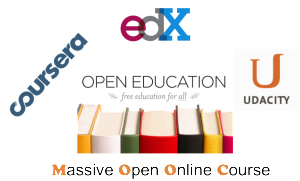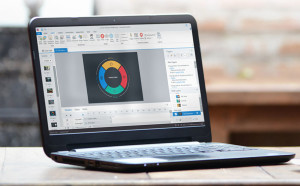E-Algebra Online Course
Intro
In this post I hope to provide some food-for-thought around ideas of creating an online course for teaching maths. To start with there is a quick outline to the a bit of the background and how online courses are typically made, before moving onto my own thoughts, ideas and experiments. I really hope over time to gather lots of feedback from other people and see if this can evolve into something quite good, and hope that as you are still reading this you’d like also to help share the journey!
Background
 Over the past few years I’ve been fascinated by the rise of online courses (in particular Massively Open Online Courses, or MOOCs), covering topics from just about every path of academia, to business, leisure and everything inbetween. I started wondering how hard was it to create learning materials like those you often see on Coursera, Edx or Udacity. Another similar system which interested me was OCR/CUP/Raspberry Pi collaborative project to turn the entire Computer Science GCSE into an online self-taught course (example here)
Over the past few years I’ve been fascinated by the rise of online courses (in particular Massively Open Online Courses, or MOOCs), covering topics from just about every path of academia, to business, leisure and everything inbetween. I started wondering how hard was it to create learning materials like those you often see on Coursera, Edx or Udacity. Another similar system which interested me was OCR/CUP/Raspberry Pi collaborative project to turn the entire Computer Science GCSE into an online self-taught course (example here)
Typically these courses will have series of videos, often with embedded content such as multiple choice quizzes that prevent the user moving on past certain points in the video unless they answer correctly. They are usually supplemented with further quizzes, assignments and forums, some which are moderated automatically and others which are peer-assessed.
So how are online courses made?
Most of the established platforms have their own in-built tools for creating courses, however there are a number of pieces of software in the public domain  that aim to do just that. I would suggest the two biggest heavyweights in this category are the commercial packages Articulate Storyline and Adobe Captivate, however any google search for ‘course authoring software’ will return a plethora of results. These programs typically remove the need for any formal programming knowledge and provide interfaces similar to the likes of PowerPoint to quickly and easily create rich content.


How I'd like to see them used for teaching and learning maths
The possibilities to me seem really really vast. I’ve experimented a little bit with students creating short videos and quizzes and using the platforms to package neatly, track data and provide some added interactivity; but I would like to take this much further. The first few things that come to my head when I think about my ideal online learning course are:
1. Engaging content
People don’t always want to just sit in front of a screen and be talked at. What could be done to make things more interesting, interactive and exciting?
2. Delineated paths
The problem I see with much of this content is similar with the problems of powerpoint – you already know what is happening on the next slide and the user’s understanding or knowledge of the current won’t do much to change it. I’m a big fan of ‘branching’ structures that may still have the same main or central path for pupils to follow, but with lots of sidetracks for those either needing a little extra help or wanting to extend or fast-track.
3. Use of data
These types of courses allow us to gather huge amounts of data. Traditionally people would simple collect overall scores of examined content and sometimes individual question responses, however nowadays (in particular thanks to a little thing called tin-can api), you can track just about everything – what did people click on? How long did they stay on a page for? How many wrong attempts did they have before getting the right one? Did they give up? Did they come back? It would be really nice if this data, along with where people provide more direct feedback could be built into a course design cycle.
4. Feedback
This couples with the delineating paths, having strong systems in place to give appropriate feedback that helps the learner work through cognitive conflict and develop understanding. Ticks and a mark out of 10 simply aren’t good enough – if you look at any game people play on a games console it is most likely that the environment will adapt to the users’ actions and provide lots of continuous subtle feedback. Through making mistakes and trying different options/strategies the user should be able to slowly gain a better understanding of how the world they are in works. I don’t see why much of the same principles shouldn’t apply in a more academic learning context.
5. Collaboration
Current courses often try to make use of the fact that many people are studying the same course at the same time and will have fairly ‘live’ forums and assignments. But what about the people who are watching the exact video at the same time? or both just starting the same assignment? Are there way to make use of the fact there are other real people in the same situation? My go-to response when it comes to these types of things are to tell people to check out and try the lessons from desmos.com (I’ve written a post about one of them here). These activities are designed for use by students who will most likely be in the same classroom or computer lab and working on the same problem with a teacher available to facilitate.
Thats all well and good, but can any of this actually be done?
I strongly believe that given the right motivation and support, teachers can really lead the way in the production of high quality, engaging learning materials. Technology that used to only be available to people with vast programming experience and even bigger budgets is now much more accessible. I’ve already mentioned two of the software packages that can be used without any real programming knowledge to create interactive template-driven content. I’d like to find ways to couple these with good data-management, animation,  and game production platforms (which I hope to write more about in future posts). There are currently a number of larger groups working towards these goals, ones that have stood out to me in the past include Glass Lab Games and Sparx, however I still think there is a definite place for individual or small teaching group contributions. In the next section I’ll show you something I started putting together a little while back but struggle to find the time to really develop:
The Nuts and Bolts
In the demo tab you can see the start of an experiment to create some sort of interactive algebra e-learning course. I used the website goanimate to produce simple images and animations, and build on top of them using articulate storyline.
The Pedagogy
Without spending much time reading through the research (which there is of course a huge amount and well worth the time), I thought it would be nice to see if I could approach solving simple linear equations from very informal methods (dragging beans into boxes). Once students get the general understanding of boxes as placeholders, I would then move on to things like operations (adding and removing boxes from each side) and replacing boxes with algebraic notation. The structure is loosely meant to follow:
location 1) tutorial where students can make mistakes and slowly build an understanding for how to solve problems involving unknown quantities
location 2) reinforcement through practice and challenges
location 3) move to formal notations and methods to help transfer informal knowledge back to common classroom practice
What I’m happy about
I mostly just like the fact that I made most of this a couple of years back before I had any programming knowledge. I think the use of animation instead of videos of me talking is a much more engaging route, and the interactions are better than your typical multiple-choice quiz. At no point is the student told how to complete the tasks, but just guided to build on their own informal ideas. The module can be uploaded to moodle and simple data is tracked (at the moment just completion status).
What I’d really like to improve on
This is really in its infancy, as mentioned I think data-tracking can be much more powerful and I’d also like to give more options for students when they get answers right or wrong. I can imagine further prompts for those who don’t get things, and harder challenges for those who pick up quickly. I’ve started designing location 2) which builds from a question bank of graduated difficulty which might be a good place to incorporate this (but am yet to find the time to complete). More than anything I’d just like to add lots more content so people can get a clearer idea of how deep understanding can be built up in such a way.
I’d be really keen to hear what people think and ideas for how to move this experiment forward. Feel free to use the comments section below or to contact me directly with any thoughts, ideas and feedback. I’ll also do my best to update when any new progress or developments are made so make sure to subscribe using the link below.
